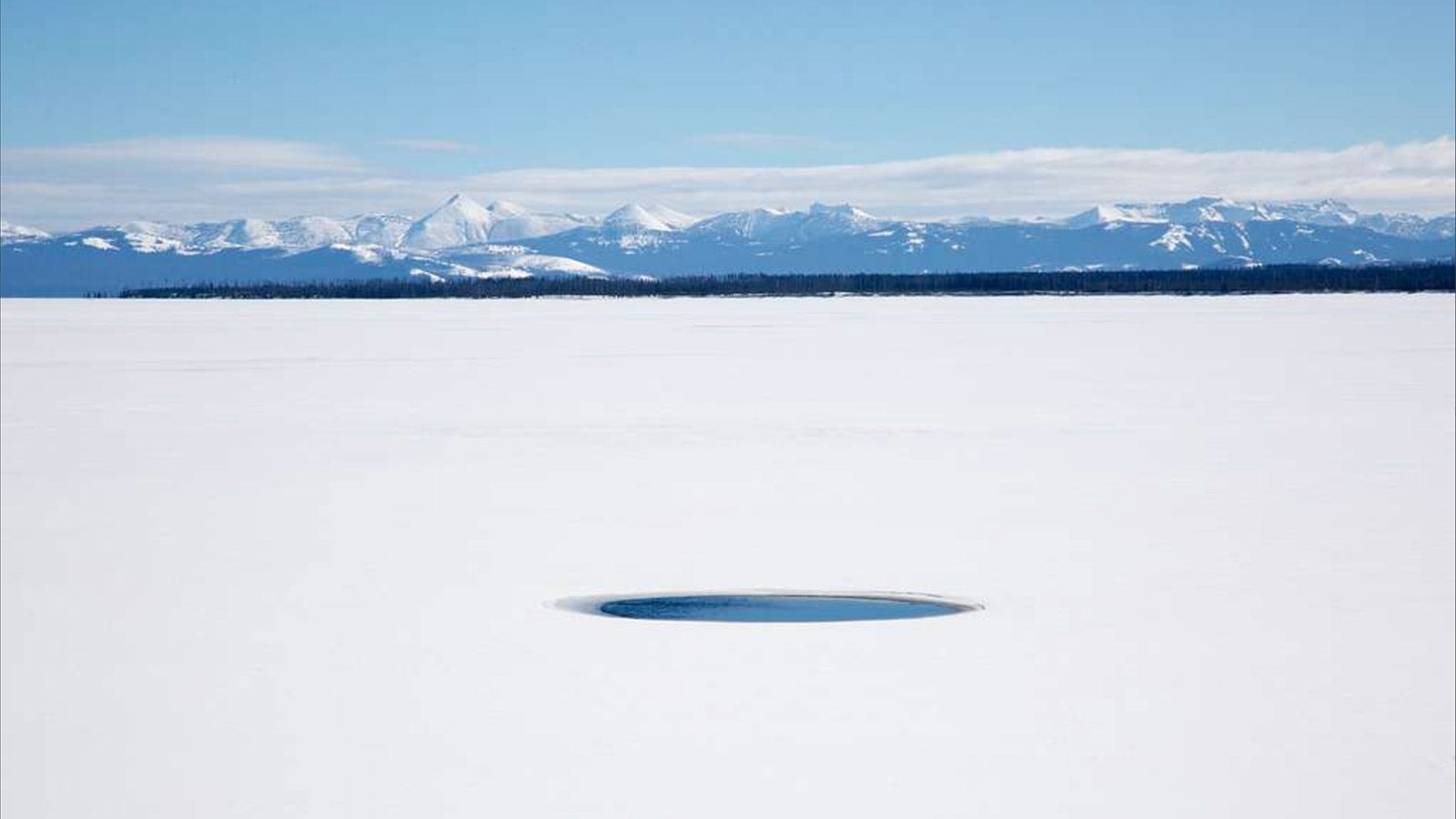Running Cold: New Research Shows Ice Endures at Yellowstone Lake Despite Warming Trends
Long-term trends for ice cover on Yellowstone Lake, North America's largest high-elevation lake, seem to be holding steady despite warming trends in the region. (Photo Credit: National Park Service)
In a warming world, new research has found something unexpected at iconic Yellowstone Lake, North America’s largest high-elevation lake.
The time the lake is covered by ice each winter is holding steady — the same as it has been for the last century — despite warming regional temperatures, according to new research from a team led by Scott Hotaling from the Quinney College of Natural Resources.
This is unexpected news as lakes around the world are experiencing shorter durations of ice cover, the authors report in a new paper published in the journal Environmental Research Letters.
“This winter stability is a bit surprising considering the trajectory of other lakes,” Hotaling said. “Yellowstone Lake seems to be uniquely resistant to this particular climate change impact. The question is why. What factors are making a difference for this place?”
Situated at 7,733 feet above sea level in the heart of Yellowstone National Park, Yellowstone Lake is roughly 20 miles long and 14 miles. It freezes over completely in late December or early January and usually thaws in late May or early June.
Records for the lake’s ice-off date have been recorded each year since 1927 and the ice-on date recorded since 1931. Scientists from Utah State University, University of Wyoming, Colorado State University and Colorado Mesa University analyzed climate data for the same period, including air temperatures and precipitation. They also compared Yellowstone Lake’s data with seven similar lakes in northern Europe.
A lack of long-term change in the duration of Yellowstone Lake’s ice cover was unexpected, as the region has seen a warming climate. Since 1950 annual air temperatures have increased by 1.8 degrees Fahrenheit throughout the greater Yellowstone ecosystem. Changes are particularly pronounced at the high elevation, where air temperatures increased by about 2.5 degrees Fahrenheit between 1980-2018.
“Using local weather data we found some evidence for increased summer, fall and spring air temperatures, primarily in the last three decades,” Hotaling said. “Given the key role of air temperatures in driving ice formation and break-up, it is noteworthy that we did not find evidence for corresponding shifts in ice cover timing.”
Why the apparent discrepancy? While it is possible that low temperatures in fall — which are important in predicting ice formation — are not rising as quickly as overall temperatures, a more likely explanation is that increased snowfall at Yellowstone Lake has served as a buffer against warmer weather, they said.
Snow cover, particularly in spring, can insulate ice and delay break-up. Cumulative spring snow has nearly doubled over the last century at Yellowstone Lake, the research showed. In general, precipitation has increased in spring and fall there, a big difference from the Upper Green River Basin to the south, where snowfall has declined or been relatively stable at high elevations.
Shifts in local precipitation, especially increases in fall and spring snow, appear to be buffering ice phenology against warming temperatures, according to the research.
This might not last forever, the researchers said, noting projections of continued warming and shifting precipitation regimes in the high Rocky Mountains. Trends show that a “tipping point” may be coming when ice phenology could abruptly change for Yellowstone Lake, largely stemming from an ongoing shift to a rain-dominated precipitation regime in the fall and spring.
If that happens, there may be wide-ranging consequences for nutrient cycling, lake productivity, fisheries and recreation, they said. Hotaling, in collaboration with Tim Walsworth, also from the Quinney College of Natural Resources, are planning a similar analysis for Utah’s Bear Lake as another comparison in the region.
CONTACT
Scott Hotaling
Assistant Professor
Watershed Sciences
scott.hotaling@usu.edu
TOPICS
Research 879stories Water 260stories Climate 151stories Outdoor 80storiesComments and questions regarding this article may be directed to the contact person listed on this page.







